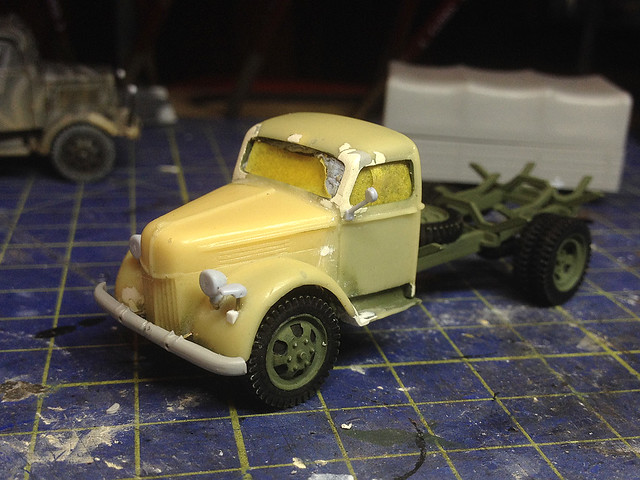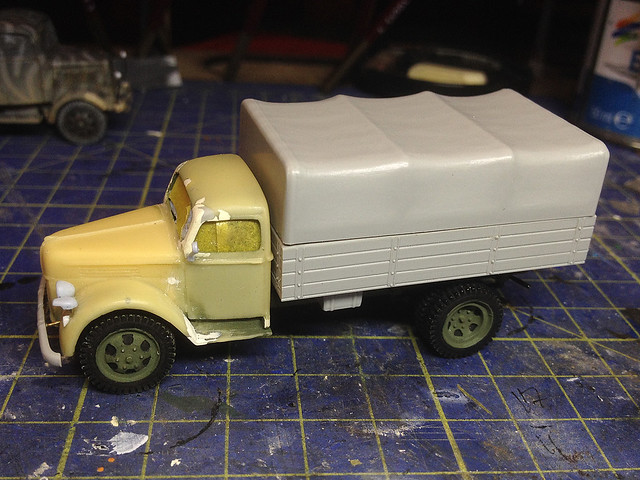The extras are taken from my scrap box, mostly left overs from Opel Blitz kits I had going spare. I could have gone the extra yard and added a tool set - pick and shovel - on the side of the bonnet, but when I tried them for size it looked a bit cluttered so I left them off.
There are some really nice reference illustrations over on the Engines of the Wehrmacht web site. Each German army truck has it's own page and each page shows variants and differing equipment set-up so it's been invaluable.
With the cab 'dressed' I turned my attention to making the cargo flatbed. The German version of the V3000 truck had a slightly different flat-bed configuration to that of the usual Opel Blitz (from which I am modifying this model). It's an issue of height, the Blitz has a high-sided cargo bed - about 7 planks high - while the Ford had lower sides - of about 4 planks high.
It was a very simple operation to cut down the Italeri Blitz flat-bed to four planks height...
 |
| At the back you can see one of my Pegasus 'German Army Trucks' which have the high-sided cargo bed typical of Wehrmacht lorries. In front you can see my modified Italeri Opel Blitz bed. |
One issue, however, is the very plain and undetailed look of the Italeri canvas cover - which is a good and a bad thing. Good because the real Opel Blitz canvas cover - with all it's distinctive 'window flaps' - is very different to the plain old cover of the German V3000. So I don't have to remove any detail, just add a little - some folds here and there to give it some 'character' (at the moment it is just a sort of plastic 'box').
 |
| The funny German 'tow hook'. This example was pinched from another kit I happen in my 'spares box'. |
Well, another stage done. So now I have to base coat the cab and all the new bits and pieces I have added. Next on the agenda is the detailing of the canvas tilt cover and fixing that to the flat-bed before base coating that.



No comments:
Post a Comment